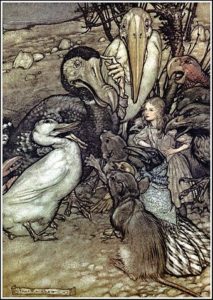More Equal Therapies than Others, Part 2

In his introduction to ”The Doctor’s Opinion” in the A.A. Big Book, Bill W. said A.A. favored initial hospitalization for the alcoholic who was “jittery or befogged.” It was imperative that the person’s brain was cleared so he then had a better chance “of understanding and accepting what we had to offer.” The reason to include Dr. Silkworth’s endorsement in Alcoholics Anonymous was to document a “medical estimate” of the A.A. 12-Step plan of recovery. “Convincing testimony must surely come from medical men who have had experience with the sufferings of our members and have witnessed our return to health.” But that was almost eighty years ago; and there have been some radical changes in the receptiveness of 12-Step recovery.
In modern addiction treatment there are a growing number of voices saying A.A.’s 12-Step approach should either be taken out of the treatment game or sidelined as a “recovery support service” (RSS) instead of being an integral part of the addiction treatment process. However, it would restrict or bench a valuable asset to addiction recovery. The rationales given for this generally follows two lines of argument.
One way is to portray A.A. and other 12-Step groups as religious or cultish in nature. This distortion stems from the secularization of American culture since the late 1930s when A.A. began, as well the failure to make a distinction between spiritual and religious consistent with 12-Step philosophy. See “Spiritual not Religious Experience” for a discussion of this distinction and a response to the accusation that the spiritual nature of A.A. disqualifies it from being used within addiction treatment. The second route is to suggest the 12-Step approach does not fit with the modern medical model of addiction treatment.
In the first ten years of A.A.’s existence the fellowship became convinced that organizationally it had to permanently remain nonprofessional. This was eventually formalized in Tradition Eight. Concurrent with that realization, was the origin of what would be called the Minnesota Model of addiction treatment. The Hazelden Foundation (now the Hazelden Betty Ford Foundation) blended professional and trained nonprofessional staff within a treatment approach based on the 12-Step philosophy of A.A. Throughout the 1950s, Hazelden honed its treatment model on three working principles.
First, alcoholism was seen as a primary condition and not just a symptom of an underlying disorder. Second, alcoholism was a disease and should be treated as such. The American Medical Association (AMA) officially identified alcoholism as a disease in 1956. Third, following the A.A. idea of the alcoholic suffering physically, mentally and spiritually, alcoholism was said to be a multiphasic illness. “Therefore treatment for alcoholism will be more effective when it takes all three aspects into account.” Abstinence was an integral goal of treatment.
These principles set the stage for a model that expanded greatly during the 1960s—one that has been emulated worldwide and has merged the talents of people in many disciplines: addiction counselors, physicians, psychologists, social workers, clergy, and other therapists. These people found themselves working on teams, often for the first time. And what united them was the notion of treating the whole person—body, mind and spirit.
Cracks began to appear in the dominance of the Minnesota Model of addiction treatment even as its hegemony grew in the 1960s. Methadone maintenance as a treatment for heroin addiction arose in the early 1960s. In the 1980s, the biological model of psychiatry began its ascendency and in 1991 the AMA took the further step of endorsing a dual classification of alcoholism as both a psychiatric and a medical disease. In 1992 SMART Recovery began. “SMART Recovery is based on scientific knowledge, and is intended to evolve as scientific knowledge evolve.” In 1994 Moderation Management became a self-help group for individuals who wanted to moderate, not abstain from alcohol.
Addiction professionals developed diverse alternatives to addiction treatment centered on 12-step philosophy. Stanton Peele developed Life Process Program as an alternative to 12-Step treatment, which he now offers as an online program. Marc Lewis wrote The Biology of Desire, refuting the medical view of addiction as a brain disease. He conceived it as an extreme form of learning.
Lance Dodes wrote The Sober Truth, purportedly debunking the bad science behind 12-Step programs and the Rehab industry. It claimed to be an expose of Alcoholics Anonymous, Twelve Step programs and the rehab industry—how “a failed addiction-treatment model” came to dominate America.
David Sinclair developed the Sinclair Method, which conceived of alcoholism as a learned behavior, one that can be removed by the behavior modification principle of extinction. “The solution discovered by Sinclair effectively means you have to drink yourself sober!” And there are others. But the medical model, although it has been modified, remains supreme in addiction treatment.
In the 1990s, a movement began in medicine to develop evidence-based practices (EBP). A widely accepted definition of EBP by Dr. David Sackett is that EBP is “the conscientious, explicit and judicious use of current best evidence in making decisions about the care of the individual patient. It means integrating individual clinical expertise with the best available external clinical evidence from systematic research.” When applied to addiction treatment, the principle is generally referred to as evidence-based treatment (EBT). The National Institute on Drug Abuse (NIDA) simply referred to EBTs as treatment approaches “that have an evidence base supporting their use.” The website GoodTherapy.org elaborated, saying that EBT was “treatment that is backed by scientific evidence.” This referred to extensive research, which has been documented and demonstrated to be effective on a particular treatment.
Consistent with this understanding, NIDA listed a manualized Twelve Step based treatment model called Twelve Step Facilitation (TSF) as an evidence-based behavioral therapy. TSF actively seeks to engage substance abusers in becoming involved in 12-Step groups, “thereby promoting abstinence.” However, a writer and researcher for Handshake Media, Laurel Sindewald, concluded in her article, “AA Is not Evidence-Based Treatment,” that NIDA wrongly listed TSF as evidence-based.
In Part 1 of this article, “More Equal Therapies than Others,” is a description of TSF and a discussion of how Sindewald’s critique wrongly and inconsistently grouped A.A. and other 12-Step groups with treatment approaches like the Minnesota Model and TSF that use 12-Step philosophy. Her provocative title is the result of mistakenly grouping A.A. and treatment approaches based on 12-Step philosophy together; and then illegitimately transferring her critique of these 12-step treatment approaches to A.A. A.A. sees itself as a fellowship and not a treatment. Here we will briefly look at how Sindewald’s narrowing of the NIDA sense of “evidence-based treatment” allowed her to conclude TSF was not evidence-based.
As was described in Part 1, Sindewald gave a biased description of 12-Step philosophy, stating it viewed addiction as merely “a spiritual disease born of defects of character.” Twelve Step groups supposedly said they were the only cure, “involving faith in a higher power, prayer, confession, and admission of powerlessness.” Contrasted with the NIDA definition of addiction as a disease of the brain, she asked how TSF as a professional medical treatment could be based on an understanding of addiction as a spiritual disease. Note the rhetorical sleight-of-hand in how she conveniently left out the A.A. and 12-Step understanding of addiction as a physical, mental and spiritual illness/disease.
Another place Sindewald used the same tactic was where she defined evidence-based. “In this article, I define ‘evidence-based’ to mean any treatment supported by numerous scientific experiments with rigorous methods that include control groups, randomization of patients to treatments, and bias-free samples.” Note how her sense of “evidence-based” is more restrictive than NIDA, GoodTherapy.org and even Sackett’s widely acknowledged sense of evidence-based practice for medicine. Her criteria seem to be even more restrictive than the American Psychological Association’s criteria for well-established “empirically validated treatment” in the “APA Task Force on Promotion and Dissemination of Psychological Procedures” Refer to Table 1 for the criteria.
Gianluca Castelnuovo wrote an article for Frontiers in Psychology on “Empirically Supported Treatments in Psychotherapy.” Consistent with the broader NIDA sense of evidence-based, he said the term evidence does not have one single definition. “evidence-based practice (EBP) includes many forms of evidence other than data from RTCs [randomized control trials].” There are two contradictory visions of what causes change in psychotherapy. One approach emphasizes the primacy of therapist and technique. The second vision focuses of the patient-therapist relationship and what the client brings to the therapeutic relationship.
The first vision sees the specific methods used by the psychotherapist as accounting for, by far, most of the changes in therapy. “Other factors (e.g., therapist relational qualities, patient–therapist relationship) are secondary, at best. This viewpoint is seen most notably in what have been termed the EST and EBP movements.” This approach conducts tightly controlled outcome studies, where specific treatments are pitted against one another or a control group and applied to specific disorders, usually as defined in the DSM. This describes the Project MATCH study, for which TSF was developed. This first sense proceeds from a medical model of “diagnosis plus prescriptive treatment equals symptom amelioration.”
The second view of psychotherapeutic change attributes most positive therapeutic outcomes to client factors (40%) and the therapeutic relationship between client and therapist (30%). The technique used and the skill of the therapist accounts for 30% of positive therapeutic outcomes. This so-called “common factors approach” then discourages attempts to pit one therapy against another or against a placebo group of no treatment (clients placed on a waiting list) as ultimately doomed to failure, since all therapies have the same potential for positive outcomes (the dodo bird effect). And the relationship between the therapist and client is the most important factor for change. Here is where the fellowship sense of A.A. fits because what makes it work is the community of fellow sufferers helping one another.
When discussing the significance of common factors in “The Legacy of Saul Rosenzweig: The Profundity of the Dodo Bird,” Barry Duncan noted how experienced therapists know psychotherapy requires the unique tailoring of a therapeutic approach to a particular client and circumstance. And if a therapist attempts to do therapy by the book, it often doesn’t go very well. There are limitations to manualized therapies, even TSF.
The structure minimizes the factors brought to therapy by the client. It restricts or eliminates the therapeutic relationship or fellowship between client and therapist. And it emphasizes the factors (therapist and technique), which typically have the least positive outcome effects. If you want to determine whether a therapeutic approach is “evidence-based” or “more equal” than other therapies when treating a designated DSM disorder, you will likely use a structured, manual-based treatment. And you will have a wrong-footed, biased sense of relationship-based models of change like the Twelve Steps of A.A.
For more information of the therapeutic power of common factors and the dodo bird effect, see the above-linked article by Barry Duncan. Also read the Wampold et al. article, “A Meta-analysis of Outcome Studies Comparing Bona Fide Psychotherapies: Empirically, ‘All Must Have Prizes’”; or “The Dodo Bird Effect” and “Another Brick in the Wall” on this website. If you are interested in exploring “the science behind 12 Step recovery,” try If You Work It, It Works! by Joseph Nowinski.


